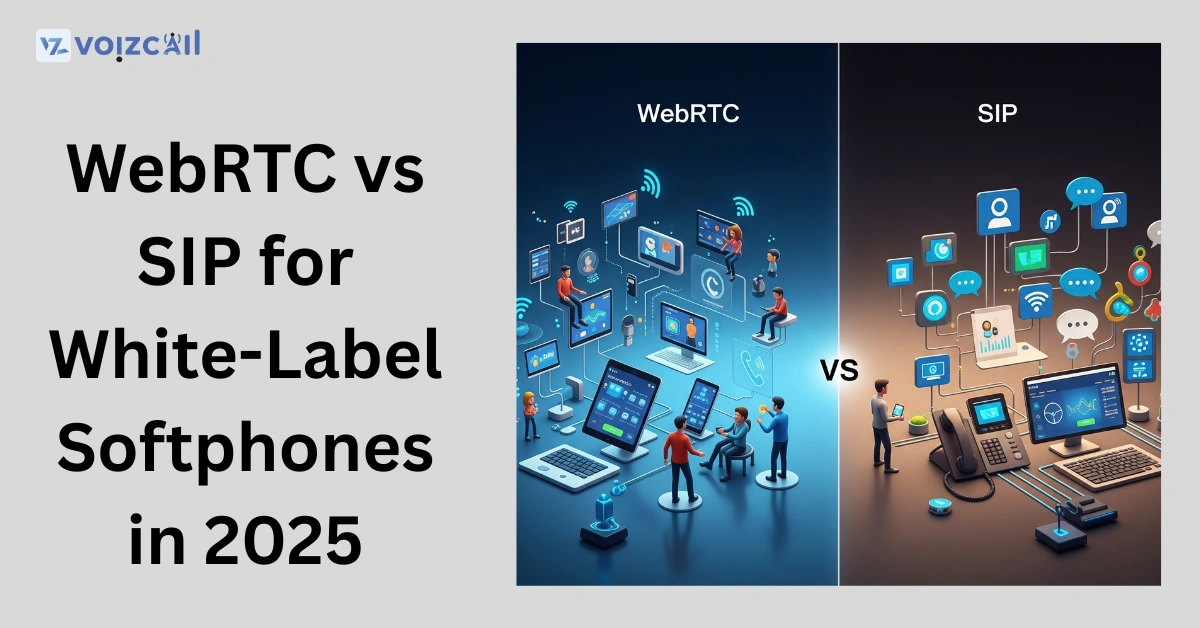


06/Jun/2025
If white-label softphones are what you’re focusing on, you have most likely encountered WebRTC and SIP. Even though TDM and SIP are both widely used by VoIP carriers, you should choose the best one for your company.
We’ll break down the WebRTC vs SIP softphone comparison in simple language, so you can make an informed choice. Let’s get started!
What Are WebRTC and SIP?
We should first learn about the two in order to make a comparison.You may easily use WebRTC to make video or audio calls through a web browser without extra software.It uses standard web protocols and is perfect for fast, easy communication.
SIP (Session Initiation Protocol) helps to set up, supervise and close down voice calls. A lot of businesses depend on SIP to work with their phones and it supports both softphones, desk phones and PBX systems.
Which utility should you use when picking a VoIP softphone: WebRTC or SIP?
|
Feature |
WebRTC Softphones |
SIP Softphones |
|
Ease of Use |
Runs in browsers, no installation needed |
Requires software or hardware setup |
|
Device Compatibility |
Works on any modern browser |
Supports wide devices including hard phones |
|
Security |
Built-in encryption (DTLS, SRTP) |
Depends on implementation, can be secure |
|
Call Quality |
High quality with internet connection |
High quality, more control over network |
|
Scalability |
Great for web apps and fast deployment |
Ideal for large, complex systems |
|
Customization |
Flexible UI, easy white-label branding |
Powerful backend customization |
|
Use Case |
Perfect for quick setup and customer apps |
Best for traditional VoIP providers and enterprises |
Why Choose WebRTC for White-Label Softphones?
No downloading or installs are required, so users can start a call by opening their browser.
Call / Email for Sales Inquiry Today
It functions just as well on desktop, mobile and tablets.
Great for Customer-Facing Apps: Perfect if you want users to connect from your website or web app.
Fast Updates and Innovation: New features and fixes roll out quickly with web technologies.
Why SIP Still Holds Strong for VoIP Providers
Wide Device Support: Compatible with phones, gateways, and PBX hardware.
Deep Call Control: Handles complex routing, conferencing, and integrations easily.
Proven Stability: Has been the backbone of VoIP for decades with mature infrastructure.
Robust Enterprise Use: Ideal for businesses with heavy call volume and custom needs.
SIP vs WebRTC for White-Label Softphones: Which One Is Right?
If your business is focused on quick deployment, ease of use, and browser-based calling, WebRTC is a great choice. It’s perfect for startups, customer support portals, and lightweight communications.
On the other hand, if you are a VoIP provider or a large business needing strong control, compatibility with existing systems, and enterprise-level features, SIP may be the better fit.
Final Thoughts: WebRTC vs SIP Softphone Comparison in 2025
Both WebRTC vs SIP for VoIP softphones have their unique strengths. The best choice depends on your needs:
Want simplicity, web integration, and fast setup? Go WebRTC.
Need stability, advanced call features, and device variety? Choose SIP.
Remember, many providers combine both technologies to get the best of both worlds.
Excited to explore more on VoIP and softphones? Stay tuned for more guides, comparisons, and tips on building the best communication tools in 2025!